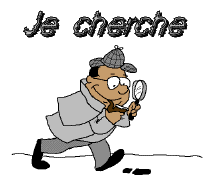L'importance d'un bon siège d'auto pour empêcher des douleurs au bas du dos.
Car's seat versus coccyx subluxation
By Gilles G. Brisson D.C.
ABSTRACT:
Some car seat or chair designs can cause a coccyx subluxation-misaligment or maintain and aggravate a coccyx subluxation-misaligment, causing back pain while the person is sitting in a car or in a chair.
INTRODUCTION:
After correcting a sacro-coccyx subluxation in the lying and sitting position, some patients still experience pain; not necessarily in the low back area, while they are sitting in their car or in a chair, especially those where the buttock tends to sink down into the cushion.
An evaluation of the coccyx while the patient is in the position corresponding to that maintained in a car seat will reveal a hidden sacro-coccyx subluxation.
The proper correction of the subluxation will solve the problem and at the same time, eliminate the pain in the area where it was present.
DISCUSSION:
Many patients are experiencing low back pain, mid dorsal pain or even neck pain when they are sitting their car, wether they are driving or not. The same type of pain occurs when they are sitting in a chair or couch but not in an upright chair.
Doctor George Goodheart said that we should always evaluate our patient in the position where the experience their discomfort. Since we do not have a car seat or a couch in our office and we cannot ask the patient to bring it with him, we should try to reproduce the condition which approximates the position in which the person experiences pain while in the car or on a certains pieces of furniture.
First of all, let's discuss the design of some car seats which are called ergonomic by the manufacturer. A lot of these seats are at an angle which is less then 90 degrees between the seat and the back (Fig.1).
When your are sitting in those type of seats your knees tend to be above your hips, causing the buttocks to sag, thus diminishing the normal lordotic curve of the lumbar area. This kind of design will cause the coccyx to move anteriorly in relation with the sacrum causing a sacro-coccyx subluxation. (Fig. 2)
The same holds true with those couches and chairs, where you feel as if you are sinking in a hole when sitting down on it, and you need someone to help you to get out of it.
The dura attaches at one end at the level of Sacrum 1-2 and the Coccyx, and at the other end Cervical 1-2 and in the Cranial bones more specifically, at the sutures themselves (1-2-3). If a sacro-coccyx subluxation is present, the patient may be experiencing pain at the attachement of the dura itself, or anywhere along the spine, even to the point of headaches.
Because it is a specific type of procedure, before using the evaluation to determine this hidden sacro-coccyx subluxation, it is important to correct any and all structural subluxations related to the spine, pelvis and lower extremities sitting and lying down. After these corrections have been made, if the patient is still in pain in the above position, then you can apply the following procedures:
1- The patient is sitting and both piriformis are tested individually. They should be strong. If not, evaluate the cause and correct it.
2- A small pillow or apparatus, no more than 4 inches, is placed under the distal part of the thigh near the knee in a sitting position.
3- When piriformis are tested again, one or two will show a weakness in this position.This is the positive indication for a hidden sacro-coccyx subluxation.
4- Challenge for the proper correction associated with the correct phase of respiration in the above position. Adjust according to the findings, while keeping the same position as above.
5- Verify the strength of the piriformis. If they show any weakness, you may challenge for a Categori I type pelvis or a sacral wobble. These challenges have to be done in the position with the pillow under the distal part of the thigh.
The correction should be made in the same position.
6- The correction found in #4 should be done by the patient at home, sitting in his/her chair or by placing a pillow in the position described in #2. The correction should be done once a day, 5-6 repetitions with the phase of respiration in step 4 above.
After this type of correction the pain experienced by the patient should be gone.
CONCLUSION:
This type of procedure is quite practical and does not require a long theorietical description. It was discoved after listening to the type of pain described by the patient's and observing the patient's position during those episodes of pain.
Recreating this position, and testing a muscle related to the area involved revealed a mechanical disorder which would not have been found in the normal sitting position.
As Doctor Goodheart says, " Patients do not have a chiropractic table attached to their abdomen."(4)
REFERENCES:
1- Upledger, John E. D.O., F.A.A.O., & Vredevougd,Jon O., M.F.A., "Cranio sacral Therapy"
(Seattle, Washington, U.S.A., Eastland Press 1983)
2- Upledger, John E. D.O.,F.A.A.O. Presentation, ICAK-USA Annual meeting 199, Pennsylvania, USA
3- Leaf, David D.C.,DIBAK, Applied Kinesiology Flowchart, 3rd. Edition ( Plymouth, MA, Privately published 1995)
4- Goodheart, George G., D.C., DIBAK, Quotation, Dr. Goodheart's research tape 108
Coordonnées
Téléphone :
450-434-1162
Adresse :
400, Grande-côte, Boisbriand, Québec, J7G 1B1
Courrier Électronique :
Pour communiquer avec le Dr. Brisson:
Cette adresse e-mail est protégée contre les robots spammeurs. Vous devez activer le JavaScript pour la visualiser.
 Recherches du Dr. Gilles G. Brisson D.C. (r)
Recherches du Dr. Gilles G. Brisson D.C. (r)